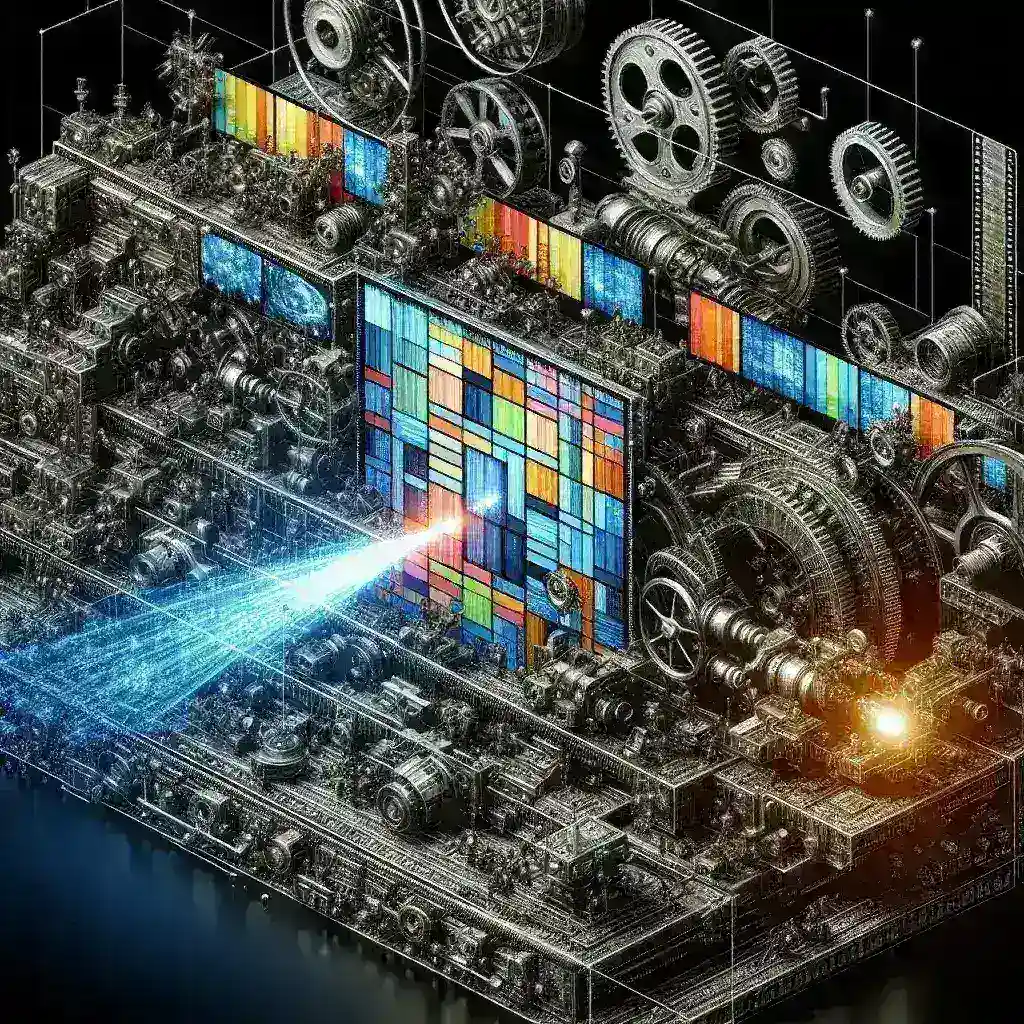Video editing has evolved dramatically in recent years, with artificial intelligence and machine learning revolutionizing how we process and analyze raw footage. One of the most significant challenges facing video editors, content creators, and media professionals is efficiently identifying cuts and scene transitions in lengthy recordings. This comprehensive guide explores the sophisticated techniques and tools available for automatically detecting cuts and scenes in raw footage, transforming what was once a time-consuming manual process into an efficient, automated workflow.
Understanding the Fundamentals of Scene Detection
Scene detection, also known as shot boundary detection, involves identifying points in a video where one shot ends and another begins. These transitions can occur through various methods including hard cuts, fades, dissolves, and wipes. Automatic scene detection algorithms analyze visual and audio characteristics to determine where these boundaries exist, significantly reducing the manual effort required in video post-production.
The importance of accurate scene detection cannot be overstated in modern video production workflows. Professional editors working with hours of raw footage from documentaries, interviews, or multi-camera shoots rely heavily on these automated systems to create preliminary cuts and organize content efficiently. The technology has become particularly valuable in broadcast television, where rapid turnaround times demand sophisticated automation tools.
Core Technologies Behind Automated Detection
Several fundamental technologies power modern scene detection systems. Computer vision algorithms form the backbone of visual analysis, examining pixel-level changes between consecutive frames to identify significant variations that indicate scene transitions. These systems typically analyze color histograms, edge detection patterns, and motion vectors to determine boundary points.
Machine learning models, particularly convolutional neural networks (CNNs), have revolutionized scene detection accuracy. These systems learn from vast datasets of manually annotated video content, developing sophisticated pattern recognition capabilities that can identify subtle transitions human editors might miss. Deep learning approaches often combine multiple analysis techniques, including optical flow analysis, temporal consistency checking, and feature extraction algorithms.
Professional Software Solutions for Scene Detection
Industry-leading video editing platforms have integrated advanced scene detection capabilities into their core functionality. Adobe Premiere Pro’s Scene Edit Detection feature automatically analyzes imported footage and creates cut points based on visual changes. This tool proves invaluable when working with footage that lacks proper timecode or when importing content from various sources.
DaVinci Resolve offers sophisticated scene detection through its cut page interface, utilizing both visual and audio analysis to identify natural break points in footage. The software’s machine learning algorithms can distinguish between intentional cuts and camera movement, reducing false positives that might disrupt the editing workflow.
Specialized Detection Software
Dedicated scene detection applications provide more granular control over the analysis process. ShotPut Pro and similar professional tools offer advanced algorithms specifically designed for broadcast and film production environments. These applications often include customizable sensitivity settings, allowing editors to fine-tune detection parameters based on specific content types or shooting styles.
Open-source solutions like FFmpeg provide command-line tools for scene detection, offering flexibility for custom workflows and integration into larger production pipelines. These tools often serve as the foundation for proprietary systems developed by production companies and broadcast networks.
Technical Approaches to Cut Detection
The technical implementation of scene detection involves multiple analytical approaches working in concert. Histogram analysis compares color distribution between consecutive frames, identifying significant changes that indicate potential cut points. This method proves particularly effective for detecting hard cuts where the visual content changes dramatically between frames.
Edge detection algorithms analyze the structural changes in image content, identifying transitions based on variations in object boundaries and compositional elements. This approach excels at detecting cuts between scenes with similar color palettes but different visual compositions.
Motion Analysis Techniques
Optical flow analysis examines motion patterns within the video stream, identifying points where movement characteristics change significantly. This technique proves valuable for detecting cuts during action sequences or when camera movement patterns shift between shots. Advanced systems combine motion analysis with other detection methods to improve overall accuracy and reduce false positives.
Audio analysis complements visual detection methods by examining soundtrack characteristics, dialogue patterns, and ambient sound changes. Sudden shifts in audio levels, frequency content, or spatial characteristics often correspond to scene transitions, providing additional confirmation for cut points identified through visual analysis.
Machine Learning and AI Implementation
Modern scene detection systems increasingly rely on artificial intelligence to improve accuracy and adapt to diverse content types. Supervised learning models trained on extensive datasets of annotated video content can recognize complex transition patterns that traditional algorithmic approaches might miss. These systems learn to identify subtle indicators of scene changes, including gradual lighting shifts, camera angle variations, and compositional modifications.
Unsupervised learning approaches offer particular value when working with unique content types or specialized footage where training data might be limited. These systems identify patterns and anomalies within the video stream without requiring pre-labeled examples, making them adaptable to novel situations and creative editing styles.
Deep Learning Architectures
Convolutional neural networks specifically designed for temporal analysis excel at scene detection tasks. These architectures process multiple consecutive frames simultaneously, learning to recognize transition patterns across time rather than analyzing individual frames in isolation. LSTM (Long Short-Term Memory) networks prove particularly effective for maintaining context across longer sequences, improving detection accuracy for gradual transitions and complex montage sequences.
Recent advances in transformer architectures have shown promising results for video analysis tasks, including scene detection. These models can process variable-length sequences and maintain attention across distant temporal relationships, potentially improving detection of narrative scene boundaries that might not correspond to obvious visual transitions.
Practical Implementation Strategies
Successful implementation of automated scene detection requires careful consideration of content characteristics and workflow requirements. Multi-pass analysis approaches often yield superior results, with initial passes identifying obvious transitions and subsequent passes refining boundary placement and eliminating false positives.
Threshold optimization plays a crucial role in detection accuracy. Different content types require different sensitivity settings, with action sequences typically requiring higher thresholds to avoid false positives from rapid movement, while dialogue scenes might benefit from more sensitive detection to capture subtle reaction shots and cutaways.
Integration with Existing Workflows
Professional production environments require seamless integration between scene detection tools and existing editorial systems. Modern solutions often provide API access and standardized output formats, enabling custom integrations with asset management systems, collaborative editing platforms, and automated transcoding pipelines.
Metadata preservation throughout the detection process ensures that timecode information, camera settings, and other technical details remain associated with identified scenes. This integration proves essential for maintaining editorial continuity and enabling advanced search and organization capabilities within media asset management systems.
Challenges and Limitations
Despite significant technological advances, automated scene detection faces several persistent challenges. False positive detection remains a common issue, particularly with handheld footage or content featuring rapid camera movements. Advanced systems employ temporal smoothing and confidence scoring to minimize these occurrences, but manual review often remains necessary for critical projects.
Complex transitions such as morphs, elaborate visual effects, or artistic montage sequences can confuse automated systems designed primarily for conventional cutting patterns. These scenarios often require hybrid approaches combining automated detection with manual refinement to achieve optimal results.
Content-Specific Considerations
Different video genres present unique detection challenges. Documentary footage might include long takes with minimal visual variation, requiring sensitive algorithms capable of detecting subtle narrative transitions. Conversely, music videos or commercial content might feature rapid cutting that demands robust algorithms capable of maintaining accuracy despite frequent transitions.
Live event coverage presents particular challenges due to varying lighting conditions, camera movement, and unpredictable content changes. Specialized detection algorithms designed for broadcast environments often incorporate additional contextual information such as audio cues and production metadata to improve accuracy in these demanding scenarios.
Future Developments and Trends
The future of automated scene detection promises even greater sophistication through advances in artificial intelligence and computational power. Real-time detection capabilities are becoming increasingly viable, enabling live switching and automated camera selection during multi-camera productions. These systems could revolutionize live broadcast production by reducing the need for human operators in routine switching scenarios.
Semantic understanding represents the next frontier in scene detection technology. Future systems may analyze content meaning rather than just visual characteristics, identifying scene boundaries based on narrative structure, emotional content, or thematic changes. This advancement could enable more sophisticated automated editing that considers storytelling principles alongside technical transition detection.
Integration with Emerging Technologies
Virtual and augmented reality content creation presents new challenges and opportunities for scene detection technology. These immersive formats require analysis of spatial relationships and user interaction patterns in addition to traditional visual and audio characteristics. Development of specialized detection algorithms for 360-degree video and volumetric content represents an active area of research and development.
Cloud-based processing capabilities continue to expand the accessibility of sophisticated scene detection tools. Distributed computing architectures enable real-time analysis of high-resolution content without requiring expensive local hardware, democratizing access to professional-grade detection capabilities for independent creators and smaller production companies.
Best Practices for Implementation
Successful deployment of automated scene detection requires careful planning and systematic approach to workflow integration. Content preprocessing often improves detection accuracy, with color correction, noise reduction, and stabilization helping algorithms identify genuine scene boundaries more reliably. Establishing consistent technical standards for footage acquisition also enhances detection performance across different projects and camera systems.
Regular algorithm training and refinement based on specific content types and editorial preferences ensures optimal performance over time. Many professional systems include feedback mechanisms allowing editors to correct detection errors, with this information used to improve future analysis accuracy for similar content.
Quality assurance protocols should include manual review of critical transition points, particularly for high-stakes productions where accuracy is paramount. Hybrid workflows combining automated detection with human oversight often provide the optimal balance between efficiency and precision, leveraging the speed of automated systems while maintaining editorial control over final decisions.
The evolution of automated scene detection technology continues to transform video production workflows, offering unprecedented efficiency and accuracy in content analysis. As artificial intelligence capabilities advance and computational resources become more accessible, these tools will undoubtedly become even more sophisticated and integral to professional video production processes. Understanding and implementing these technologies effectively can provide significant competitive advantages in today’s rapidly evolving media landscape.

